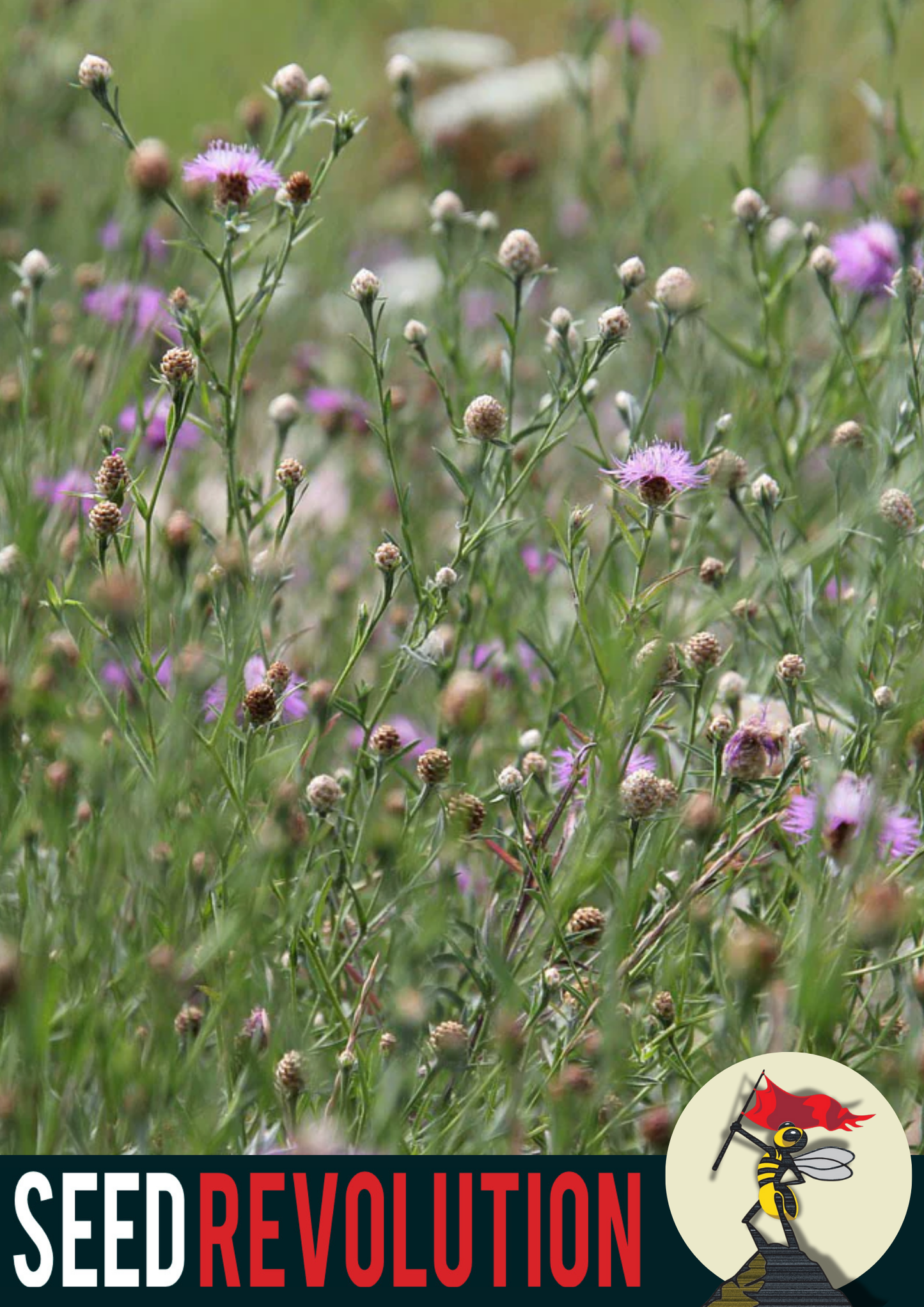Seed Revolution
Chalky Soil 100% Wild Flower Mix
Chalky Soil 100% Wild Flower Mix
Couldn't load pickup availability
If you have chalky soil, it means it’s highly alkaline. Signs you have chalky soil is if you’re ground is very stony.
read more...
If you’re unsure, a simple test can be done at home: simply place a teaspoon full of soil into a mug of vinegar. If the vinegar starts to fizz, you can be sure you’ve got alkaline soil.
Sometimes called a ‘calcareous’ soil we’ve specifically chosen flowers that grow well in your chalky haven.
How to Plant
Cheap and Easy Method:
For a quick and cost-effective approach, simply scatter the seeds directly onto bare soil. This method requires minimal preparation but has a lower success rate as it heavily relies on natural conditions being favourable. Clear the area of any debris and lightly rake the soil to create a loose surface. Evenly broadcast the seeds across the soil, then lightly rake again to ensure good seed-to-soil contact.
More Involved Method:
For better results, especially in areas with aggressive weeds or where the soil may be particularly challenging, consider using a terram membrane. This method involves laying a terram membrane over the planting area to suppress unwanted vegetation. Over this membrane, add a layer of calcareous soil, which is naturally rich in calcium carbonate and suitable for chalky conditions. Sow the seeds evenly across the soil surface and gently press them in to ensure good contact. This method, while more expensive and labour-intensive, greatly enhances the likelihood of establishing a vibrant and sustainable meadow.
Why Choose a 100% Flower Mix:
A 100% wild flower mix differs significantly from an 80/20 wild flower grass mix. In a 100% flower mix, all the seeds are from wild flowers, resulting in a meadow densely packed with colourful and diverse flowering plants. This is ideal for creating a visually stunning display and providing a rich habitat for pollinators such as bees and butterflies. In contrast, an 80/20 mix includes 80% wild flowers and 20% grasses. This blend is beneficial for establishing a more balanced ecosystem, as the grasses provide structural support and habitat for various insects and wildlife, and help to stabilize the soil. However, for pure floral beauty and higher pollinator support, a 100% flower mix is preferred.
When to Plant
The optimal time to plant your Chalky Soil 100% Wild Flower Mix is in the spring (March to May) or early autumn (September to early October). These periods offer the best temperatures and adequate moisture levels for seed germination and root establishment.
Where to Plant
This mix is specifically designed to thrive in chalky, alkaline soils, which are often found in regions with specific geological conditions. Choose a location that naturally has chalky soil and ensures good drainage. Areas with full sunlight to partial shade are ideal.
Watering Schedule
During the initial establishment phase, maintain a consistent moisture level in the soil, keeping it moist but not waterlogged. Water the seeds gently to avoid washing them away. Once the plants are established, they typically require minimal watering, relying on natural rainfall. However, during prolonged dry spells, occasional watering may be necessary to maintain healthy growth.
Blooming Period
The wildflowers in your Chalky Soil 100% Wild Flower Mix will generally bloom from late spring through late summer, approximately from May to August. The exact timing can vary based on regional climate specifics and yearly weather variations.
Expected Plant Height
The plants in this mix will vary in height, generally ranging from 20 cm to 1 metre. This variation creates a textured, dynamic appearance that provides depth and interest, while also supporting a diverse range of wildlife and pollinators.
What you get
Wildflowers Included in the Mix
- Black Knapweed (Centaurea nigra)
- Black Medick (Medicago lupulina)
- Common Birdsfoot Trefoil (Lotus corniculatus)
- Common Kanpweed ( Centaurea nigra)
- Common Sorrel (Rumex acetosa)
- Cornflower (Centaurea cyanus)
- Cowslip (Primula veris)
- Eyebright (Euphrasia officinalis)
- Hoary Plantain (Plantago media)
- Lady’s Bedstraw (Galium verum)
- Lesser Trefoil (Trifolium dubium)
- Marjoram (Origanum vulgare)
- Meadow Buttercup (Ranunculus acris)
- Meadow Vetchling (Lathyrus pratensis)
- Musk Mallow (Malva moschata)
- Ox-eye Daisy (Leucanthemum vulgare)
- Red Clover (Trifolium pratense)
- Ribwort Plantain (Plantago lanceolata)
- Sainfoin (Onobrychis viciifolia)
No Grow No Fee
Minimum of 2 years post sowing before claim can be made.
Share


